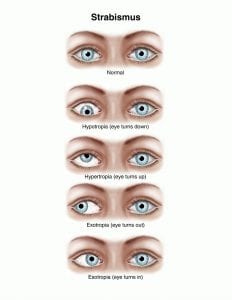Pediatrics
We offer a full range of pediatric eye care services, from basic eye exams for children to advanced treatment of eye problems. Children can suffer from a unique set of vision ailments, including strabismus (crossed eyes) and amblyopia (lazy eye). Although less common in younger patients, children also can develop glaucoma or be born with cataracts.
Whatever your child’s needs, our eye doctors have the training and experience needed to help. We have great respect for the patient/physician relationship and are well known for building a strong rapport with children and their parents. When you and your child schedule an appointment with the pediatric doctors at Concord Eye Center in New Hampshire you can rest assured you will have a safe and comfortable experience.
Routine Pediatric Eye Care
Pediatric eye exams usually begin with a referral from the child’s primary care doctor, either because of poor performance on a vision screening or because of an observed issue with the eye (eye turning in for example.) The child’s pediatrician will send over notes about what they have observed, as well as information about the child’s general health.
Dr. Morse is our pediatric specialist, however many of our providers see children, either as part of their specialties (glaucoma for example) or for an emergency visit. Our optometrists also work with children, mainly for routine eye exams and glasses and/or contact lenses.
A typical eye exam begins with one of our ophthalmic technicians. The technician will verify your child’s health history, document any issues or concerns about your child’s eyes and perform a vision test. The technician will then put some drops in your child’s eyes to dilate them. Dilation causes the pupil to enlarge, allowing the doctor to examine the back portion of the eye. Generally, it takes about 30 minutes for the eyes to dilate.
Once the eyes are dilated, the child will return to the exam room, where they will be examined by the doctor. S/he will use a retinascope, a handheld device used to determine refractive error (near or farsightedness). The doctor will also examine the eye, looking for areas of concern in the cornea, lens and retina.
If there is a suspicion of amblyopia or strabismus, the child will also meet with an orthoptist, a technician who will measure any deviation in the eye.
If glasses are needed, the opticians in the optical shop will work with you to choose the best type of glasses for your child.
Amblyopia
Amblyopia, commonly known as lazy eye, is an eye condition causing reduced vision in one eye. This means the vision or acuity (20/20) has not developed. It is estimated that 3% of children under six have some form of amblyopia. This relatively high incidence underscores the need for early detection programs such as vision screening in the primary care setting, in school, as well as by an ophthalmologist.
The development of a child’s visual system depends upon the ability to clearly focus light upon the retina within the eye. Sharply focused images permit the visual system to develop in a normal fashion.
Causes
This process of ocular development occurs during the early years of life. An interruption in this process, especially during the first three years of life, will have a long-lasting adverse effect on centers in the brain responsible for vision.
Anything that interferes with clear vision in either eye during the critical period (birth to 6 years of age) can cause amblyopia. The most common causes of amblyopia are:
- Constant Strabismus (constant turn of one eye)
- Anisometropia (different refractive errors or eye glass prescriptions in each eye)
- Deprivation (child may be born with opacities or cataract in the cornea or lens)
- Ametropia (very large refractive error or need for glasses)
Proper treatment to insure normal development of the vision system is essential. The principle for correcting amblyopia is directed towards helping the brain pay attention to the eye with deficient visual development. This may require sharpening the image that falls upon the retina with either eyeglasses or a contact lens when they are indicated.
Anatomic defects such as cataracts or corneal opacities usually need to be surgically corrected first. Once the light can be focused clearly on the retina, occlusion or patching of the dominant eye is necessary. Occlusion will force the brain to use the amblyopic eye and enable the vision to improve. The daily schedule and duration of occlusion will depend upon the age of the patient, how long the defect has been present, and the severity of the amblyopia. The earlier treatment is started by an Ophthalmologist, the more rapidly improvement will occur.
Strabismus
Strabismus is a visual defect in which the eyes are misaligned and point in different directions. One eye may appear straight, while the other eye turns inward, outward, upward, or downward. This misalignment may always be present or come and go. Sometimes the straight eye may turn while the misaligned eye straightens.

Strabismus is a common condition among children. About 4% of all children in the United States have strabismus. It can also occur later in life. The condition occurs equally in males and females. Strabismus may run in families.
Strabismus can be diagnosed during an eye exam. It is recommended that all children have their vision checked by their pediatrician, family doctor, or ophthalmologist (medical eye doctor) at or before their fourth birthday. If there is a family history of strabismus or amblyopia, an ophthalmologist can check vision even earlier than age three. The appearance of strabismus may improve as the child grows, however, the child will not outgrow true strabismus.
Treatment for strabismus works to:
- Preserve vision
- Straighten the eyes
- Restore binocular (two-eyed) vision
Your ophthalmologist may prescribe eyeglasses to treat the condition. Other treatments may involve eye muscle exercises or surgery to correct the unbalanced eye muscles.

